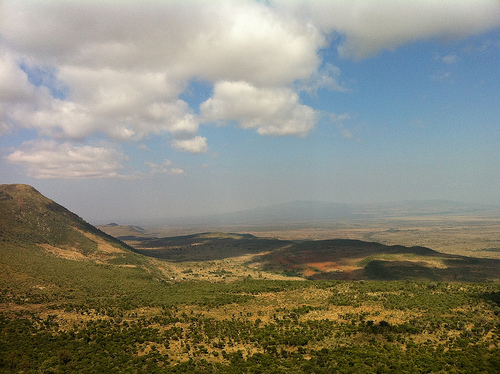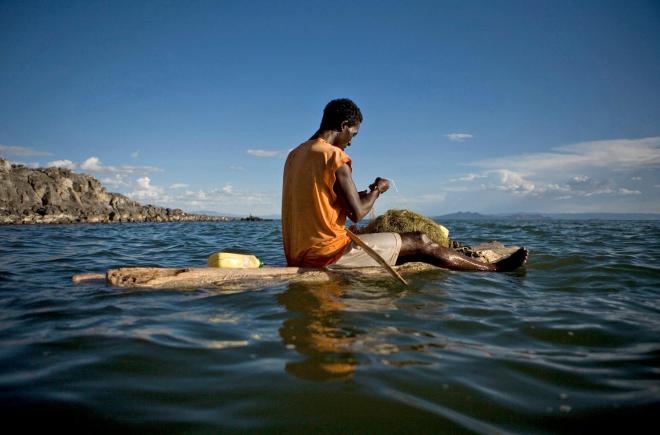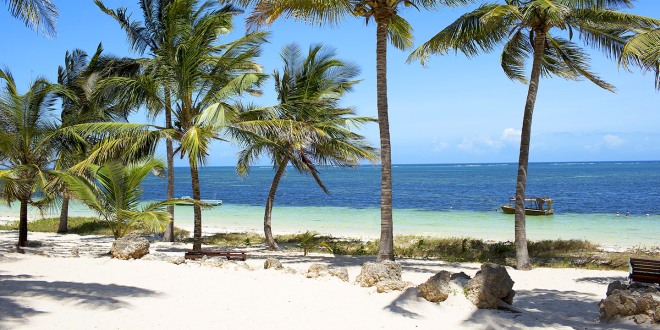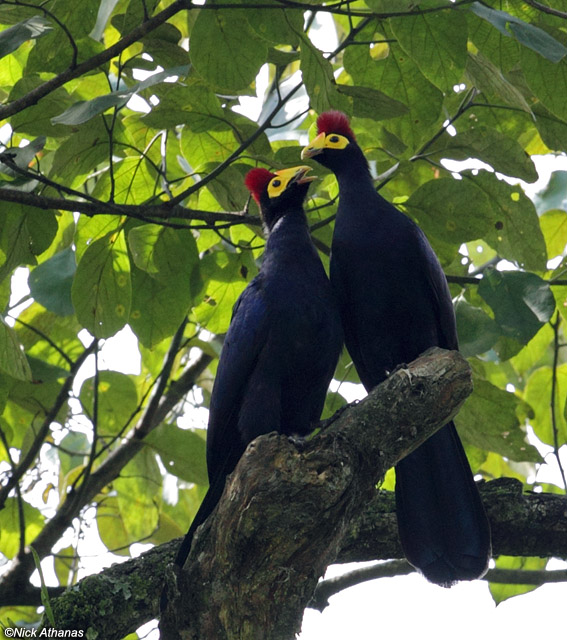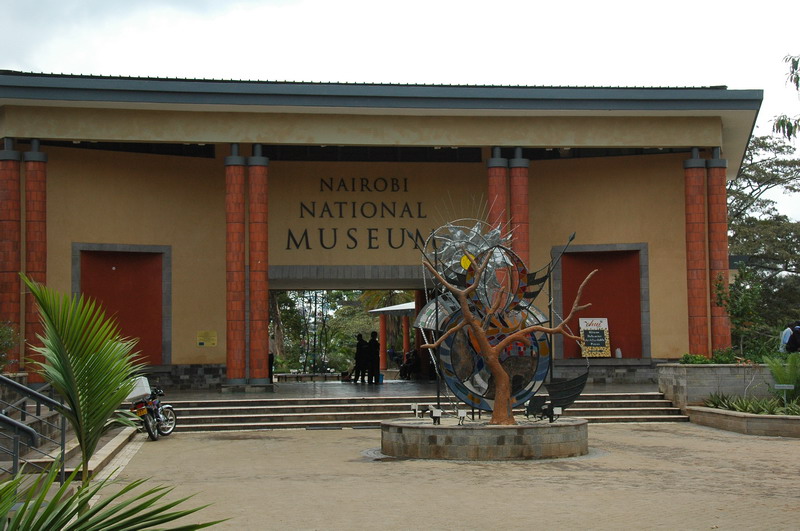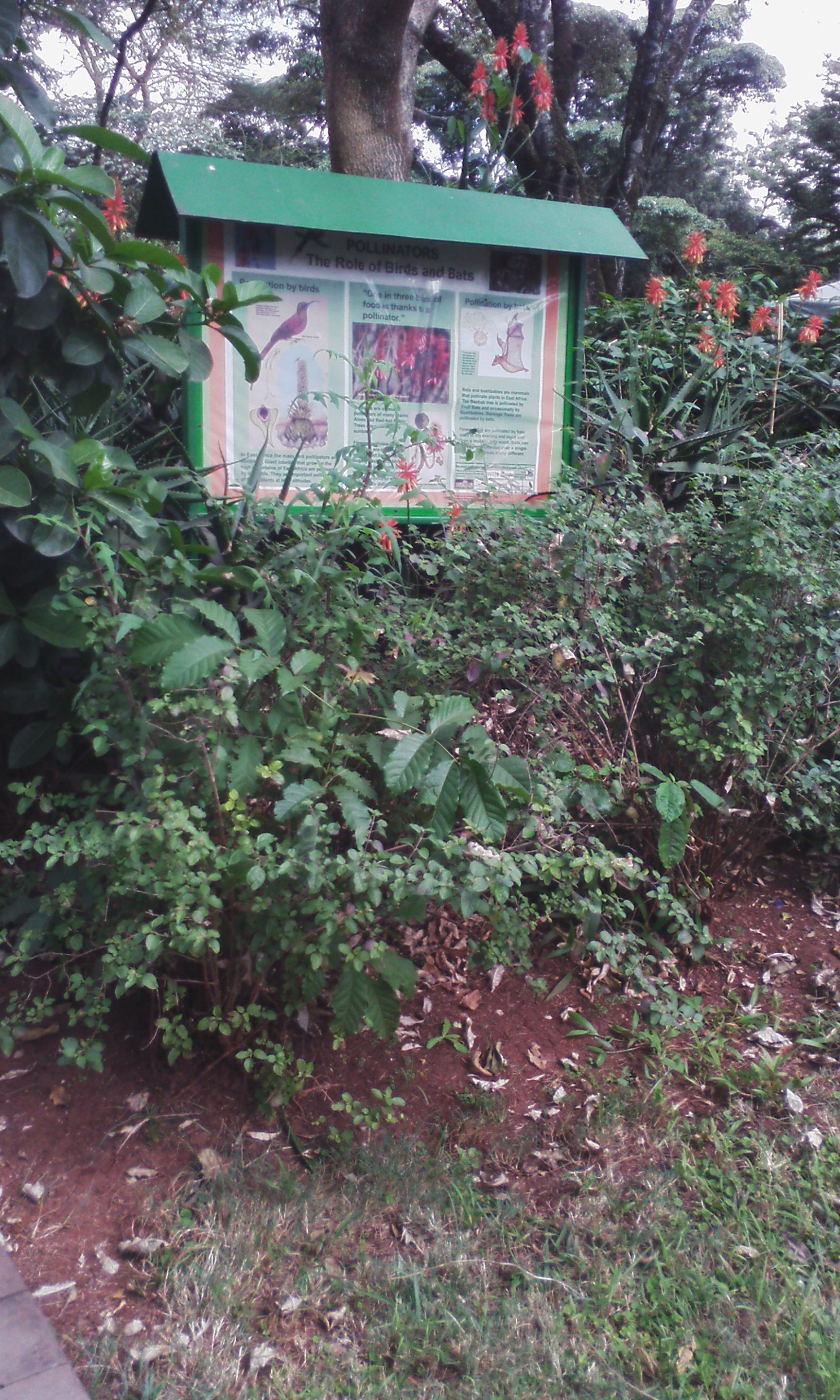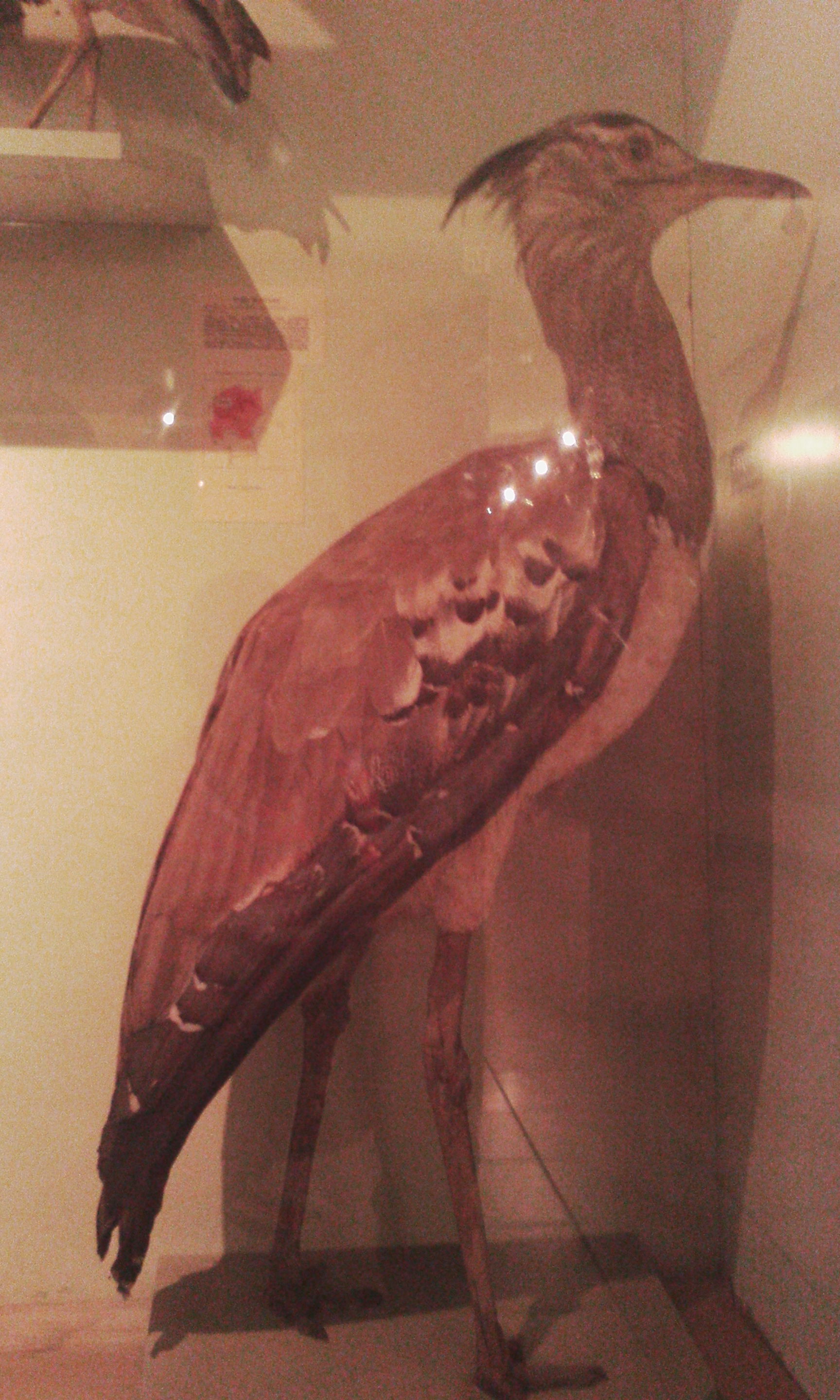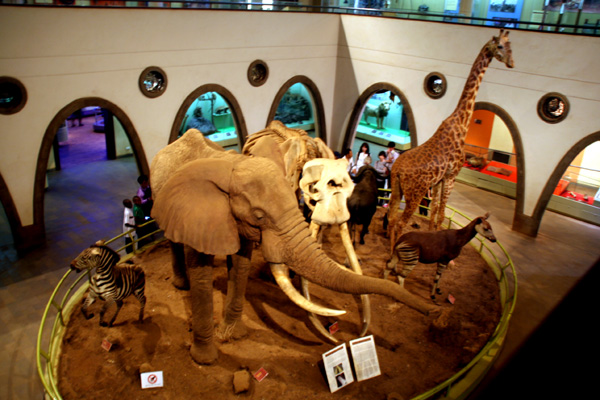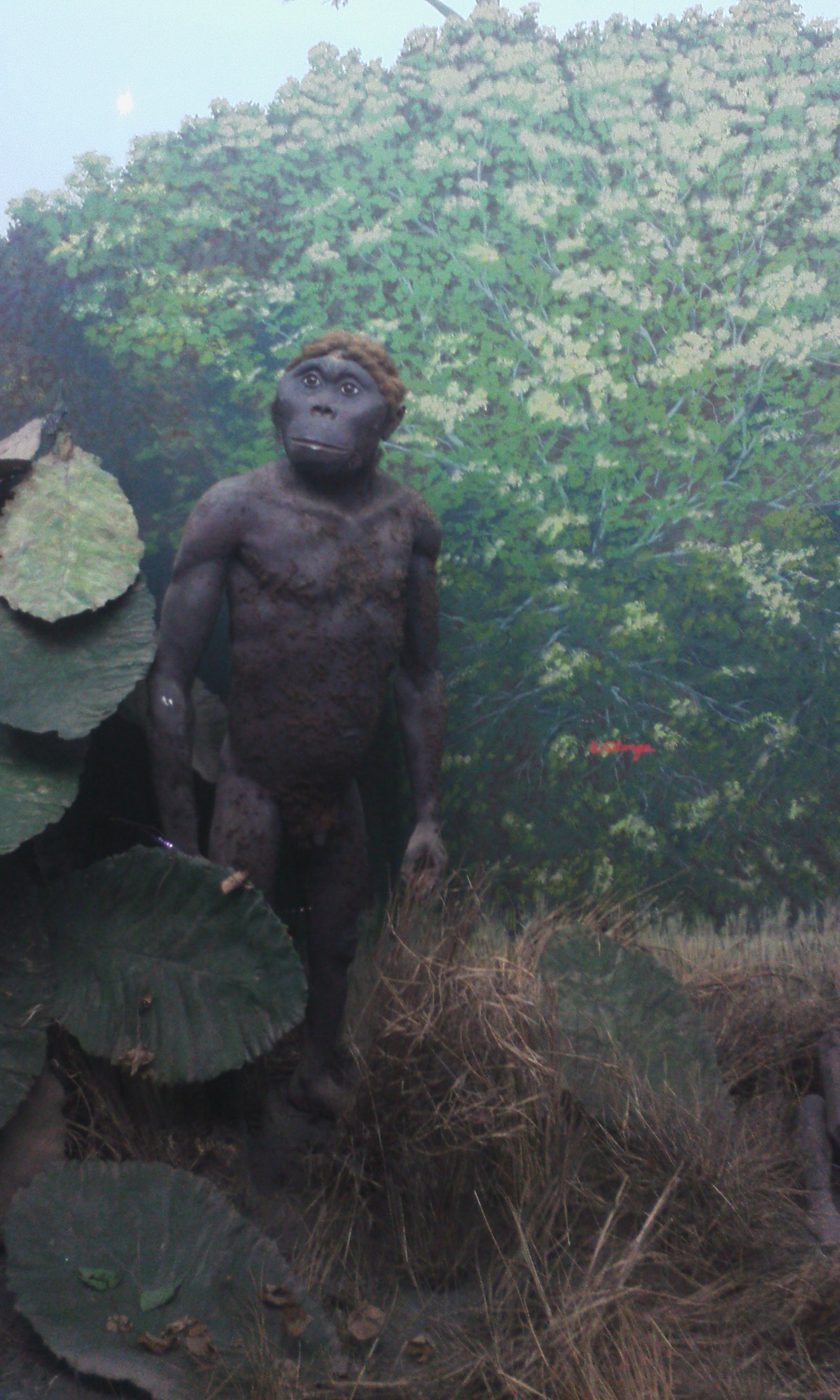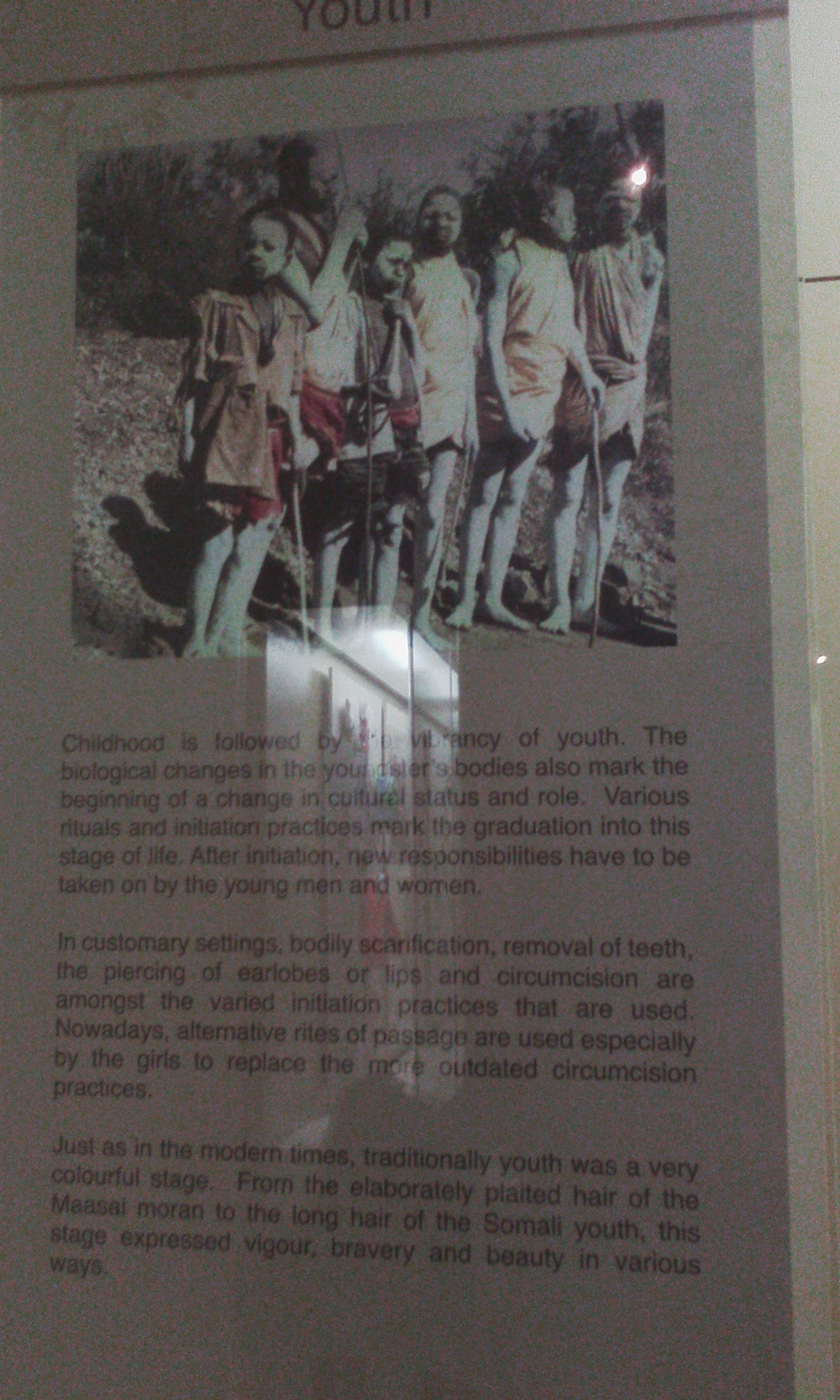“A traveler without observation is a bird without wings”-Moslih Eddin Saadi.
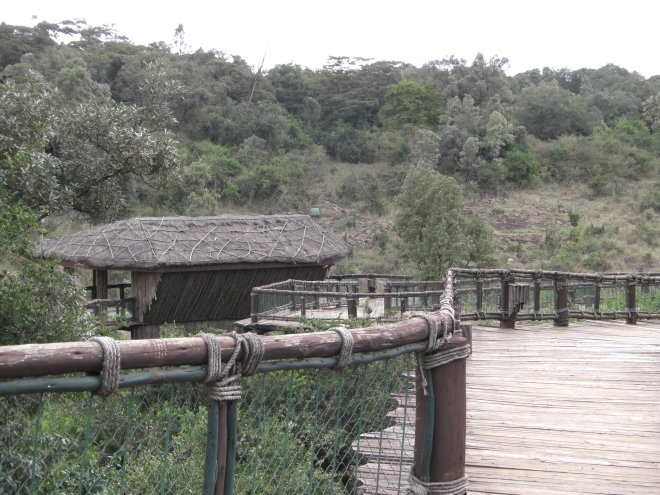 After a 20-minute- ride in a matatu from Nairobi’s bus station, I am finally here at the entrance of Nairobi Safari walk. It is 1pm but the sun’s big eye is shut. Thick grey clouds are hanging dangerously above my head. On my left, stands Nairobi national park’s gate, almost shadowing the view of Nairobi animal orphanage. A group of 3 foreigners, speaking animatedly in Australian accent are taking too long at the reception. One of them, a loud man with heavy make-up and feminine moves is raising eyebrows from onlookers. My patience is on trial. I am tempted to change my mind. Unlike Nairobi animal orphanage and the national park, very little has been written about Nairobi Safari Walk.
After a 20-minute- ride in a matatu from Nairobi’s bus station, I am finally here at the entrance of Nairobi Safari walk. It is 1pm but the sun’s big eye is shut. Thick grey clouds are hanging dangerously above my head. On my left, stands Nairobi national park’s gate, almost shadowing the view of Nairobi animal orphanage. A group of 3 foreigners, speaking animatedly in Australian accent are taking too long at the reception. One of them, a loud man with heavy make-up and feminine moves is raising eyebrows from onlookers. My patience is on trial. I am tempted to change my mind. Unlike Nairobi animal orphanage and the national park, very little has been written about Nairobi Safari Walk.
“I came here on a mission to ‘discover,’’’ I reassure myself as I force my way past the Australians, Kenyan style. The ticketing officer, lifts his face to meet my gaze. I am expecting a growl or a bark from his no-nonsense face. “Hallo,’’ I attempt to break the tension. “Hallo, welcome to Nairobi Safari walk. Are you a Kenyan citizen?’’ he asks in a calm voice. I nod. “You will pay Ksh 215,’’ he says. I display my national identity card and part with Ksh 500. Impressed by his professionalism , I ask him to keep change but he politely declines the offer.
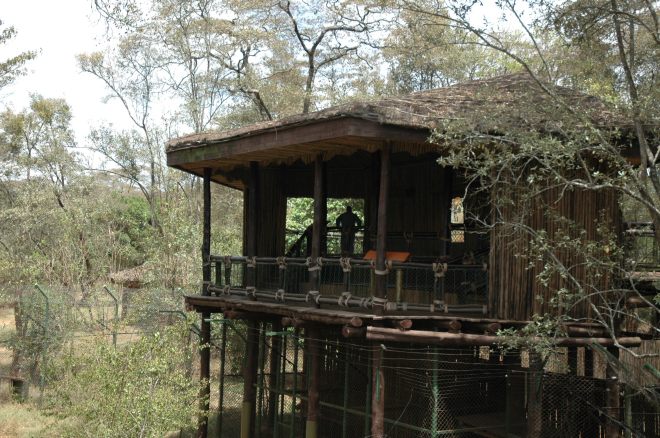
Distant lion roars and birds chirping and swooping in the air, welcome me in style. I am almost breathless and quite scared of walking on the raised wooden boardwalk. However, the further I walk, the less tense I become. I hear sharp cracking noise ahead of me. I stop, listen intently, look left and right but there is nothing. I walk cautiously, conscious of the danger of the wild. Eureka! There are pigmy hippos grazing a few metres from me. They look healthy and undisturbed by my presence. The ecosystem around here is wetland with large masses of water lilies. Not far from the hippos, lies an adult Nile crocodile, eyes closed and mouth wide open. I guess he must have had a very heavy lunch.
The adventurous spirit in me urges me to move ahead. I grab my camera and photograph them. From the corner of my right eye, I see a rungu wielding Masaai man approaching me. Startled, I freeze on the ground. We exchange formal greetings and he offers to show me around. “Why is that crocodile asleep?’’ I ask him in Kiswahili. He laughs and dares me to jump into its enclosure to find out whether its asleep or alert.
“Is the whole habitat of Nairobi Safari walk a wetland?’’ I ask my host. ‘‘No. We are transiting onto Savannah environment,” he says pointing at a rock hyrax. A white signpost stands at the edge of the trail. It bears pictures of three rock hyrax and an elephant. “Hyrax and elephants are cousins,’’ reads the signpost in part, “The 2kg rock hyrax is a distant cousin to the 1200kg elephant. Forty million years ago, there was a beast called moeritherium. The hyrax and the elephant can both be traced back to this ancient ancestor.’’
“This is just the beginning of pleasure,’’ the tour guide accelerates my adrenaline. “What next!’’ I exclaim. ‘’Be calm and follow me.’’ I trail behind the Maasai warrior, passing a number of colourful signposts and diverse indigenous tree species. From a distance, I can spot an endangered rhinoceros grazing. Not far from the rhino are herds of zebra, antelopes and a proud ostrich−a lone bird amid grazers.
Growls rent the air accompanied by purrs. I follow into the footsteps of my host without uttering a word. We enter a medium-sized shelter with walls made of glass. Outside, a restless big cat, I guess it is a cheetah, is purring . “Is that a cheetah or a leopard?’’ I break the silence. “It is a cheetah. The main difference between the two is that cheetahs have a tear line running from the inside of their eye to the mouth while leopards lack that feature.’’ Beaming with satisfaction, I hand my camera to the guide and request him to take photos of me. I pose like Usain Bolt in front of the fastest animal on earth, smiling sheepishly. Bang! A loud noise on the glass wall awakens all the demons in my head. I yell and jump in the air. My host is busy laughing like a hyena and capturing that awkward moment on camera. I gasp and look behind me. The cheetah is hitting the wall with its head. ‘’That glass wall is stronger that what you imagine. Not even an elephant can break it.’’
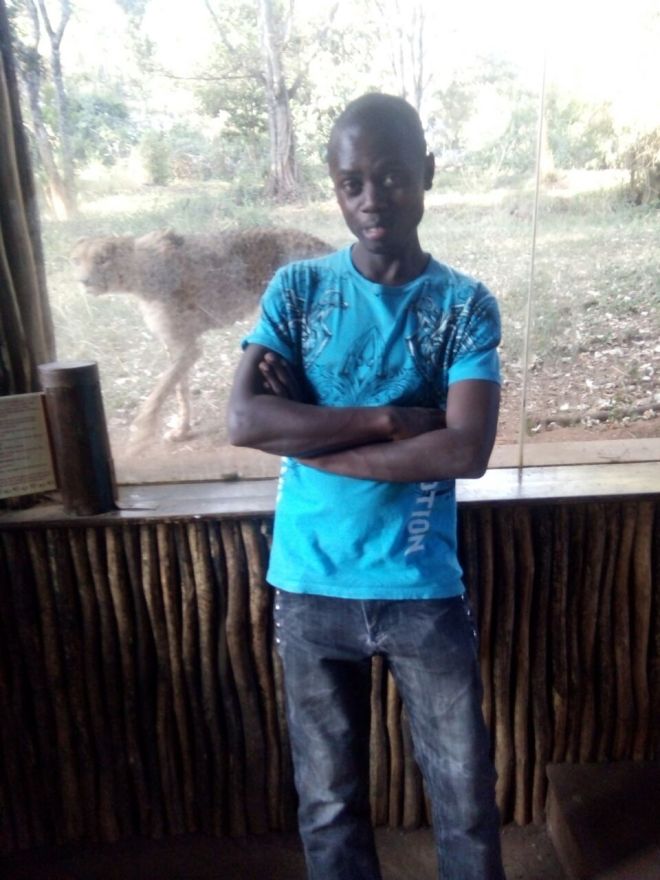
Scared blogger yelling at the top of his voice as the restless cheetah hit the wall
I force a short laughter.”Time to leave,’’ I mumble. “Not before viewing river Mokoyet,’’ my host cuts me short. ‘’As you say,’’ I respond leading the way, unaware of the exact location of the river. The clouds have scattered and the sun is partially exposed. I hum to myself Reuben James, hoping that the clouds will scatter further.
We are at the end of the boardwalk. Below us, river Mokoyet flows silently. I whistle. A scared dik-dik hops to the bush. A buffalo materializes from the forest and drinks water. Next to the buffalo, are mating oryx gazelles. ‘’There is love in the wild,’’ my guide comments . ‘’And I am in love with the wild,’’ I reply. “That’s lovely,’’ someone shouts from behind. I turn back. The three Australians are right behind us. The sissy loud dude is dancing− gyrating his hips and pointing at the mating gazelles with his lips. The burly man is holding his slim girlfriend in a tight embrace, taking selfies and chanting ‘that’s lovely’ after every 3 seconds.
Thank you Nairobi Safari Walk for showing me love.
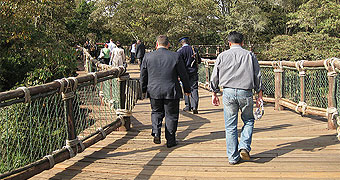

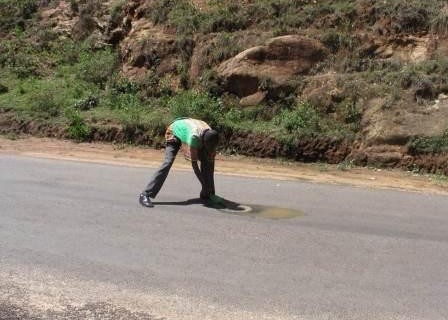
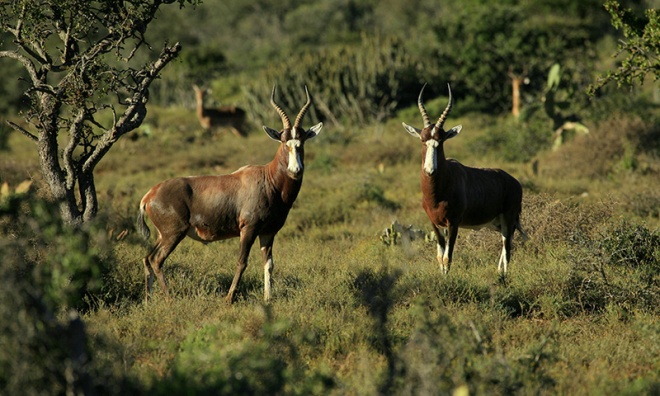 Situated in Trans-nzoia county , 27 kilometres north of Kitale town , Saiwa swamp sits on 2.7 square kilometres of land, making it the smallest national park in Kenya. Despite its size, the park is habitat to rare and endangered semi-aquatic sitatunga antelope, endangered debarazza monkey, bush bucks, giant forest squirrels, black and white colobus monkey, amphibians and reptiles. The park is also home to the grey crowned cranes and about 372 other bird species.
Situated in Trans-nzoia county , 27 kilometres north of Kitale town , Saiwa swamp sits on 2.7 square kilometres of land, making it the smallest national park in Kenya. Despite its size, the park is habitat to rare and endangered semi-aquatic sitatunga antelope, endangered debarazza monkey, bush bucks, giant forest squirrels, black and white colobus monkey, amphibians and reptiles. The park is also home to the grey crowned cranes and about 372 other bird species.